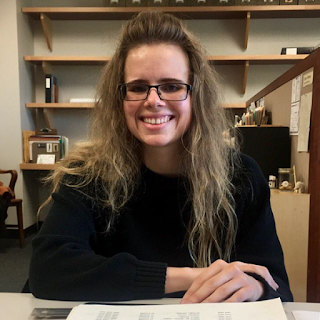Every spring, as the cherry trees on North Campus begin to bloom and the school year comes to a frantic close, the Georgia Museum of Art has the pleasure of exhibiting
the annual exit show for the Lamar Dodd School of Art’s master of fine arts degree candidates. This spring is no exception, and it is with much excitement that we present this year’s artists.
An accomplished group, many of these candidates have been exhibiting their work in galleries and shows across the country for the past few years. While it may be difficult to draw conceptual similarities between the pieces in the show, these candidates almost completely favor installation work. Drawing and painting appear not just on canvas, but are more often incorporated into video and sculpture. This move towards creating pieces that are tactile, engaging and 3-dimensional is indicative of current and upcoming trends in contemporary art practice.
 |
Dan Ba Vu, Breathing Room, 2016. Wedged into tight spaces, the concrete overflows and bends to the rigid
structures that contain it, illustrating Dan Ba Vu’s experience assimilating to American culture as a child
immigrating to the United States from Vietnam. Photo: Michael Lachowski |
From Meirav Goldhour-Shvorin’s interior designs wrought with special attention to the ways in which design can facilitate a safe, mindful and functional experience for those afflicted with post-traumatic stress disorder to Amanda Scheutzow’s grotesque, humorous monster sculptures crafted from disparate, thrifted objects, this show reflects the wide-ranging capabilities of this talented group of artists.
Conceptually rich pieces dominate the show, and
Ellie Dent’s interest in themes of the body, the abject and pain as well as trauma are particularly thought-provoking. Dent cuts into surgical paper, inflicting wounds then stitching them with real medical tools. The wounds appear in various stages of healing, and within these cuts and sutures, Dent discovers danger, fragility, intimacy, repulsion and obsession. And as Dent slashes the body,
Ariel Lockshaw slashes the land. She paints ravaged, empty landscapes in order to explore the way politics and the economy inform the way we view, use and exploit our surroundings. In her swirling representations of places and non-places, Lockshaw highlights the consequences of both man-afflicted and natural abuses.
Like Dent,
Stephanie Sutton is incredibly interested in the body, and her own body appears as the subject in many of her pieces. Sutton simultaneously defends the fat body and employs it as an offensive measure; by doing so, she explores the complex societal associations attached to fatness. Her videos suggest that the fat body is a place where pleasure is indulged — the body then becomes a source of power and an expression of identity rather than a site of weakness.
 |
In preparation for the exhibition, Reid Blechner installs his work
In the Absence of Unproductive Fiction, 2017. Photo: Michael Lachowski |
Thomas Bosse’s metalsmith work explores the lifespan of handmade metal objects. Much of his research involves keeping detailed logs and video recording the process; this leads to a comprehensive study of his process of creation. When viewing/interacting with his works in tandem with the videos that Bosse creates, the viewer can draw connections between an object, its past, and the artist’s hand. Found in the same gallery space are Zachary Harris and Jonathan Nowell. Harris’s work is made of concrete, marble and steel. His tactile approach to engineering appears in this mix of materials, and his formal arrangements are created with soft, sweeping shapes. Nowell’s work is comparatively rugged; his interest in vernacular architecture manifests in his work through objects such as deer stands, Home Depot tubs and Carhartt jackets.
Dan Ba Vu and Julia Megan Burchett are both artists who contemplate transformation and play into the unexpected potential of seemingly rigid materials. Vu’s bulbous concrete sculptures appear as acquiescent as silly putty. Wedged into tight spaces, the concrete overflows and bends to the rigid structures that contain it, illustrating Vu’s experience assimilating to American culture as a child immigrating to the United States from Vietnam. Burchett’s materials display a similar kind of malleability. A cracked car windshield drapes softly over a metal structure as a meditation on renewal and identity.
Inspired by mathematics, Reid Brechner looks to illustrate concepts by exploring the complicated nature of duality. The tension necessary to his work arises in the challenge of representing purely conceptual ideas. Through printmaking,
Arron Foster’s work inhabits a similar realm in its effort to represent the relationship between time, space and consciousness. Foster opens associations to a comprehensible, familiar world through representational images and leaves his work open-ended through more abstract marks.
 |
| Jamie Diaz (ceramics) sits with her work, Within, 2016–2017. Photo: Michael Lachowski |
Shuk Han Lui’s multidisciplinary interests are evident in both medium and style, and the pale colors and organic geometric shapes present in much of her work exemplify the meditative calmness with which she approaches the creative process. Lui sees art as a way of being, and her studio practice focuses on the spiritual journey of creation to address moments of ephemerality. Jamie Diaz’s large vases inspire a similar kind of meditative reflection. The bulbous sculptures beg to be seen from all angles, and a walk around the installation shows the rich texture of the pieces.
The exhibition, which runs from April 8 through May 14, is a stunning show of talent, innovation and contemporary practice. Each gallery, each artist, presents a new way of seeing, and when viewed together, the works both encourage and challenge one another. The opening reception tomorrow, Friday, April 7, from 5:30–8:30 p.m. We encourage you to come out and celebrate this accomplished group of artists.
Sarah Dotson
Publications Intern









